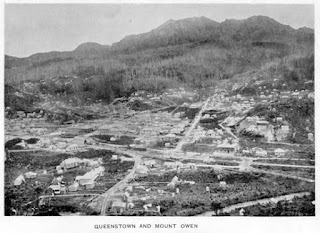It takes time to write a blog piece - even one as brief as this. It takes thought and planning and rewriting. It also takes time to think of two or three interesting Tweets, to find a couple of images to add to Pinterest, to compose an amusing status update and find one or two items to share on Facebook, to refine a LinkedIn profile and finally to catch up with conversations on various art-related web forums, having done enough research to sound Knowledgeable about the subject at hand.
 |
| nice photo, no matter how irrelevant, to break up all that text |
Who would do all this every day? Well, I have just attended yet another well-intentioned session of Advice for Artists, and this is the recommended optimum use of Social Media to raise one's profile, establish a brand and generally promote oneself and one's artwork.
"After all," the presenter exclaimed, "it's no use being the greatest artist in the world if nobody knows about you."
"Fine" I said, never having learned to keep my mouth shut, "but nobody spending that much time on line is going to become the world's greatest artist." Everyone agreed that artists juggling several part-time casual jobs, their art practice and general housekeeping and family commitments don't have a lot of time to spare, and who can afford to hire a full-time media/publicity person? The usual advice (although not, this time, from this particular very sympathetic presenter) is to set aside an hour a day for Promotion, which sounds sensible.
 |
| photo I took on the way to the presentation, so almost relevant |
Unfortunately, artists don't work like that.
Contrary to popular belief, an artist doesn't suddenly have a flash of inspiration and rush into their studio in a flurry of activity, to emerge a couple of hours later with a masterpiece before heading off to the pub for the afternoon. Ideas take time to develop. They are mulled over, considered, reconsidered. There are sketches, drawings, perhaps trial runs as thoughts are refined and/or rejected.
Half-formed ideas churn about there in the back of the mind while the artist is working on other paintings or in a mundane job or at family gatherings, and minutes, or hours, or weeks or occasionally years later, some minor event or new insight provides the final fragment that makes it worth turning one of them into a painting or a story or a piece of music.
In my case, I spend hours in the studio getting the pictures down on canvas and rethinking them, sometimes to the point of turning them into something else altogether, but that's just work. The hard part of the job, the serious thinking, happens outside the studio. Even when an artwork appears to have required only a short time in terms of physical activity, it may have taken months to create and years of experimentation and practice to develop the skills to realise the idea.
Running a successful marketing campaign requires clever and creative ideas and strategies; the only-one-hour-a-day spent in front of the computer is the result of several hours of thought, all of which distracts from the main task at hand - making art. For the artist, every moment of quiet, creative thought is precious.
How can one reconcile spending enough mental energy to run an effective business with the need to devote their entire effort to the innovation, exploration and intellectual activity required to produce the best possible artwork?
I asked the nice presenter after her talk. She said "I don't know. That's why I'm not an artist."
One of the effective uses of social media is the inclusion of images, so here's a photo I took on my way home. I can't credit the artist as I haven't the foggiest idea who it was.
Professional Development sessions at CAST by Kim Godwin, Project Manager with NAVA (National Assn for the Visual Arts)
More information: http://www.visualarts.net.au/advicecentre/nava-advice



























.jpg)




.jpg)



.jpg)










